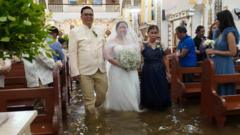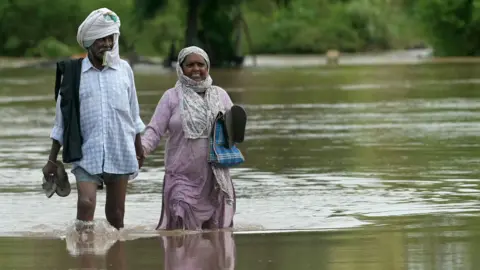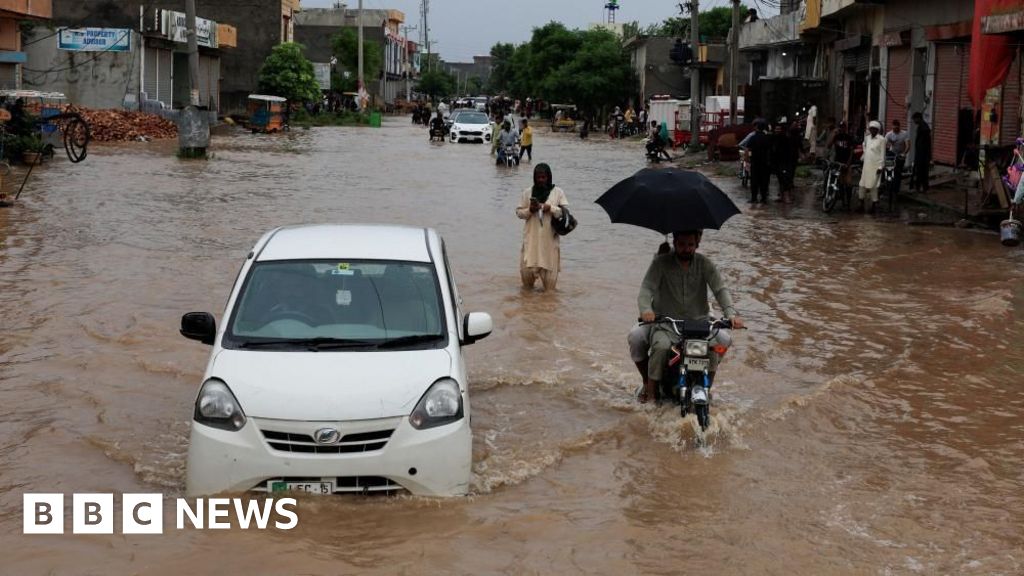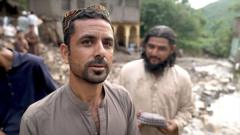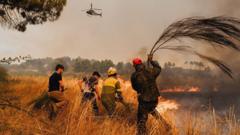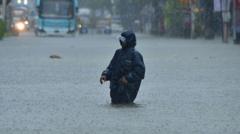In the Philippines, wedding ceremonies have taken on a unique and challenging twist as couples continue to say "I do" in flooded churches, a stark reflection of the country's ongoing struggle with consistent flooding. Most recently, Jamaica Aguilar and Jade Rick Verdillo tied the knot in Barasoain Church, north of Manila, where guests waded through knee-deep water caused by severe monsoons and typhoons. Aguilar, dressed in her stunning white gown, and her groom exemplified resilience in their determination to wed, as they focused on the significance of their union despite the circumstances.
This unfortunate trend isn't new; two years prior, another couple experienced the same predicament in the same church during a similar rainy season. Flooded weddings also took place in Bulacan province, highlighting the worsening flooding crisis in the Philippines due to inadequate urban planning, failing sewage systems, and increasingly severe weather events resulting from climate change.
The couple considered postponing their wedding the night before due to anticipated downpours but ultimately persevered, embracing the community and love around them. They immediately took precautionary antibiotics after the ceremony to guard against flood-related illnesses, underscoring the health risks involved.
The wider implications of this phenomenon extend beyond personal tales of endurance. The Philippines is a hotbed for tropical cyclones, with around 20 forming in the region annually. Recently, Typhoon Wipha compounded the challenges, resulting in fatalities and the displacement of thousands, further intensifying the call for systemic solutions to the overflowing waterways linked to ineffective waste disposal and an aging sewage system developed over a century ago.
Government officials are now pushing for a comprehensive action plan to address these flood issues, including repairs to pumping stations and improved drainage. The urgency for realignment of national resources is palpable, especially in light of criticism directed toward the current administration for prioritizing political tasks over disaster management; a scenario amplified as preparations for President Ferdinand Marcos Jr.’s upcoming State of the Nation Address became a topic of contention.
While the gloomy prospects remain daunting, newlyweds like Verdillo hold onto hope for better infrastructural investments that would provide long-term relief from flooding. He envisions a future where couples can celebrate their unions without the chaos of weather-related challenges—a sentiment that resonates through Filipino society as they seek innovative ways to mitigate a cycle of flooding that disrupts lives and livelihoods.
This unfortunate trend isn't new; two years prior, another couple experienced the same predicament in the same church during a similar rainy season. Flooded weddings also took place in Bulacan province, highlighting the worsening flooding crisis in the Philippines due to inadequate urban planning, failing sewage systems, and increasingly severe weather events resulting from climate change.
The couple considered postponing their wedding the night before due to anticipated downpours but ultimately persevered, embracing the community and love around them. They immediately took precautionary antibiotics after the ceremony to guard against flood-related illnesses, underscoring the health risks involved.
The wider implications of this phenomenon extend beyond personal tales of endurance. The Philippines is a hotbed for tropical cyclones, with around 20 forming in the region annually. Recently, Typhoon Wipha compounded the challenges, resulting in fatalities and the displacement of thousands, further intensifying the call for systemic solutions to the overflowing waterways linked to ineffective waste disposal and an aging sewage system developed over a century ago.
Government officials are now pushing for a comprehensive action plan to address these flood issues, including repairs to pumping stations and improved drainage. The urgency for realignment of national resources is palpable, especially in light of criticism directed toward the current administration for prioritizing political tasks over disaster management; a scenario amplified as preparations for President Ferdinand Marcos Jr.’s upcoming State of the Nation Address became a topic of contention.
While the gloomy prospects remain daunting, newlyweds like Verdillo hold onto hope for better infrastructural investments that would provide long-term relief from flooding. He envisions a future where couples can celebrate their unions without the chaos of weather-related challenges—a sentiment that resonates through Filipino society as they seek innovative ways to mitigate a cycle of flooding that disrupts lives and livelihoods.

